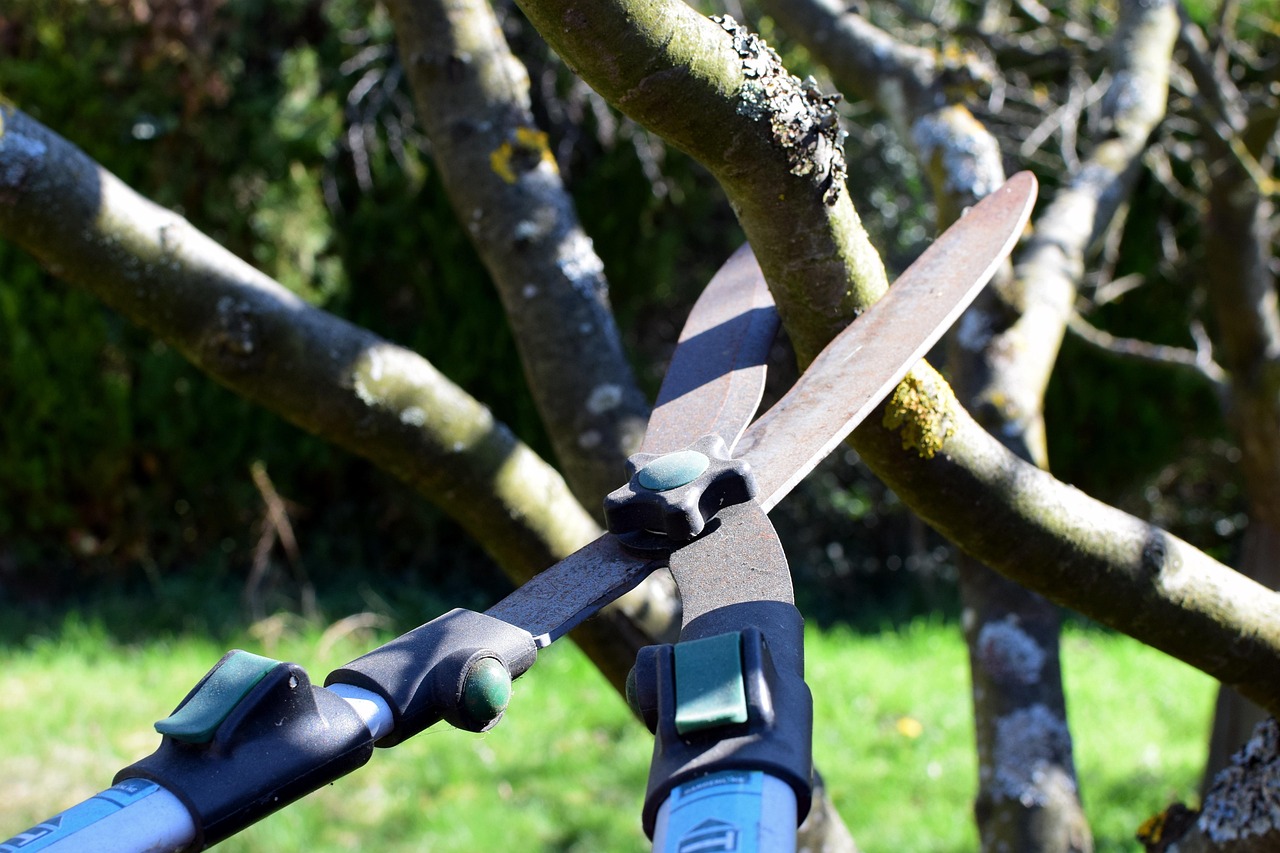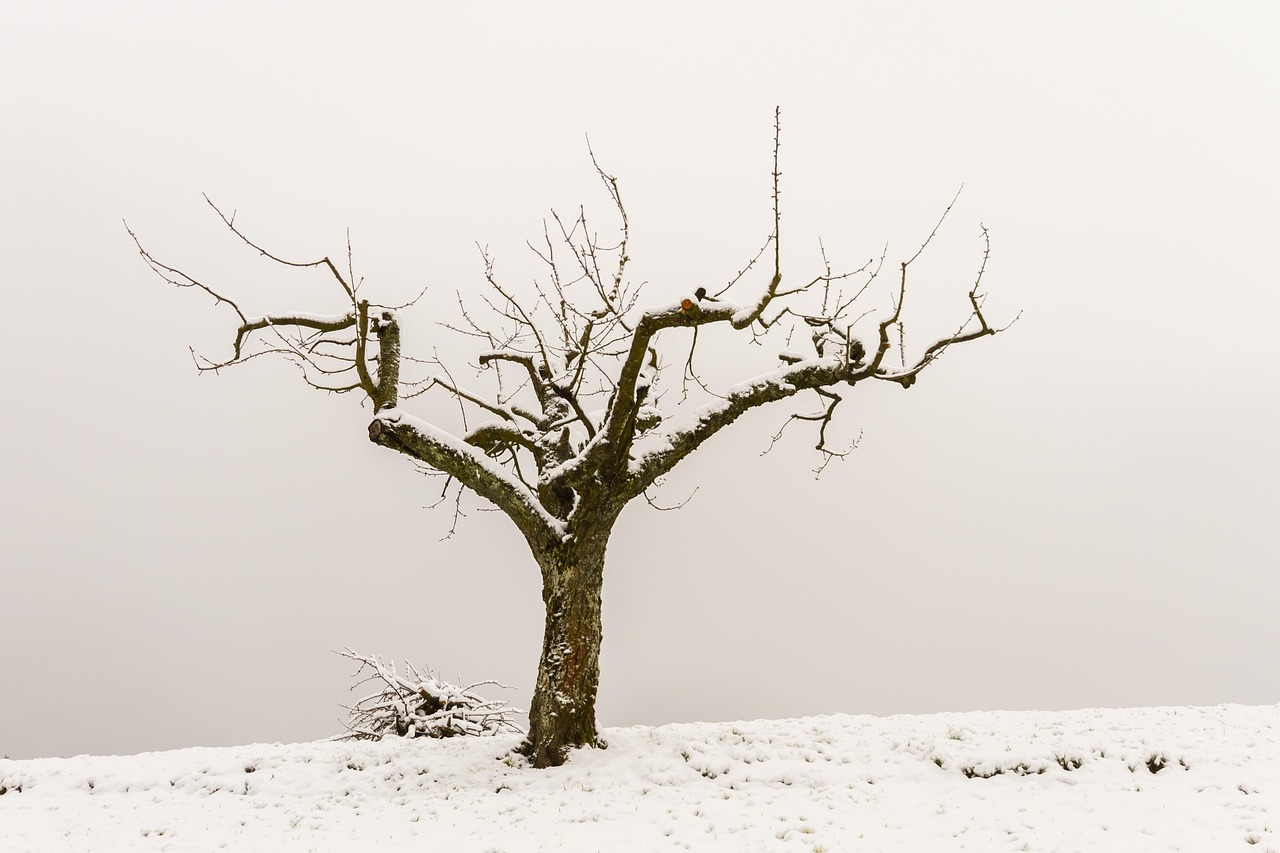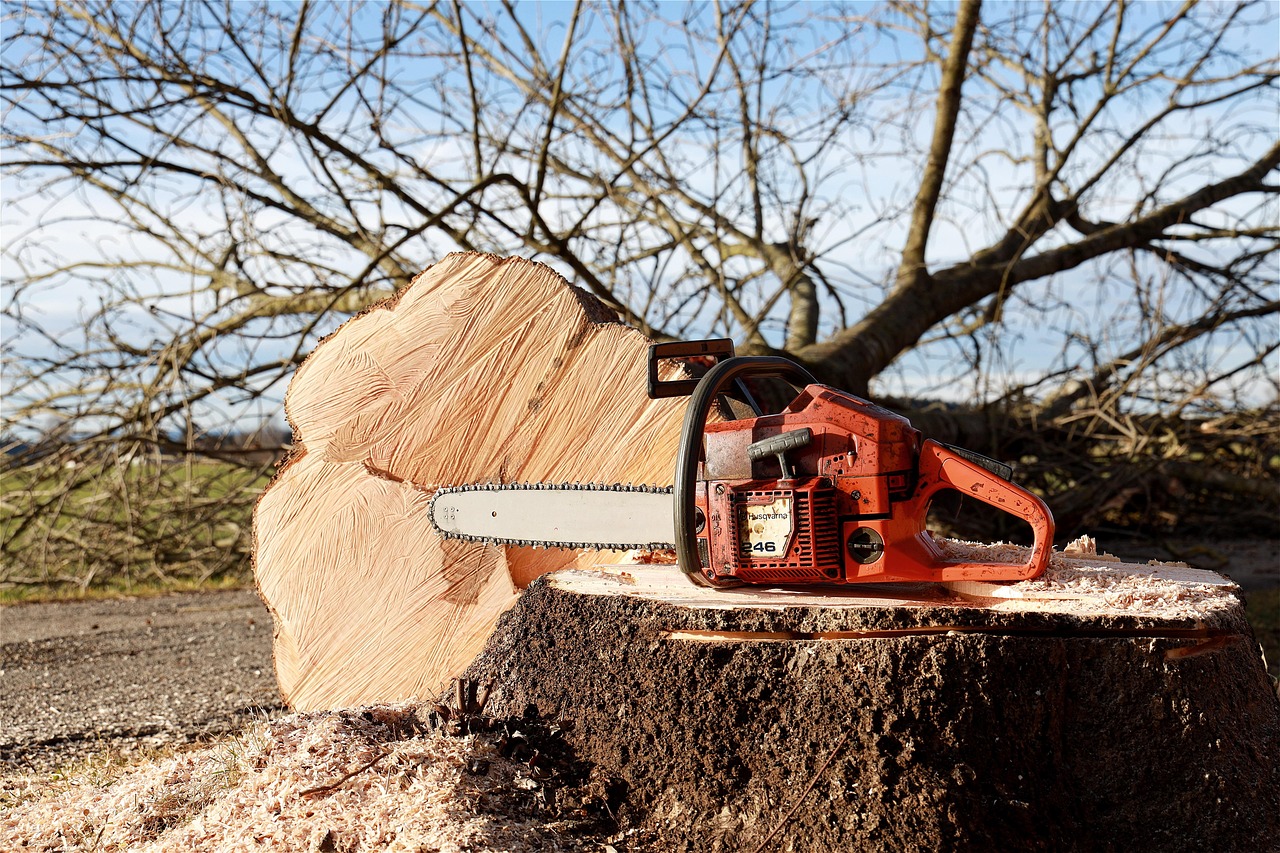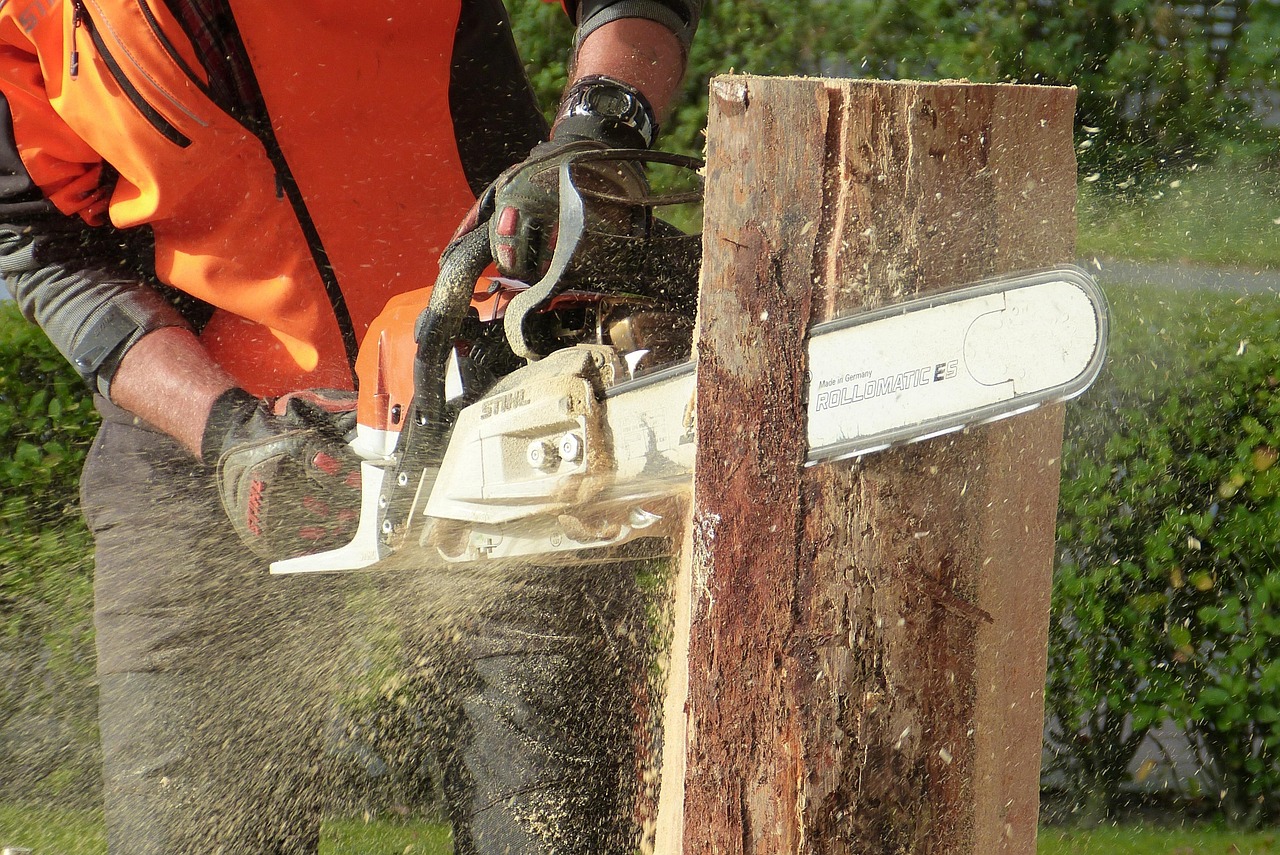Tree pruning accessories are essential tools for DIY enthusiasts and home gardeners. They facilitate effective pruning, ensuring trees remain healthy, well-shaped, and free from disease. The right accessories make tree care easier and more efficient, allowing gardeners to manage their trees with confidence.
Pruning is an important task for maintaining the health and aesthetics of trees. It involves removing dead or overgrown branches to promote new growth and improve air circulation. Proper pruning also helps to reduce the risk of disease and pest infestations. For homeowners who wish to maintain their gardens effectively, having the right pruning accessories is vital.

There is a wide variety of tree pruning accessories available, each designed for specific tasks. Understanding these tools is essential for anyone looking to take on tree care projects. Here, we will explore some of the most common pruning accessories and their uses.
Essential Tree Pruning Accessories
When it comes to tree pruning, having the right tools can make a significant difference. Below are some essential accessories that every DIY gardener should consider:
- Hand Pruners: Also known as secateurs, hand pruners are essential for making clean cuts on small branches and stems. They are perfect for trimming flowers, shrubs, and young trees.
- Loppers: These are larger than hand pruners and have long handles. Loppers are ideal for cutting thicker branches that are too tough for hand pruners.
- Saws: Pruning saws come in various styles, including folding saws and pole saws. They are used for cutting larger branches that cannot be handled by pruners or loppers.
- Pruning Shears: These shears are designed for more precise cuts and are often used for shaping trees and shrubs.
- Pole Pruners: For high branches, pole pruners are invaluable. They allow gardeners to reach tall limbs without needing a ladder.
In addition to these tools, there are also safety accessories that should not be overlooked:

- Gloves: Protective gloves help prevent cuts and scrapes while handling sharp tools or thorny branches.
- Safety Glasses: Wearing safety glasses protects your eyes from flying debris while cutting branches.
- Hard Hats: If working on large trees or in areas with falling debris, a hard hat is essential for safety.
Using the right accessories ensures that tree pruning is safe and efficient. Each tool serves a specific purpose, making it easier to achieve desired results while minimizing damage to the tree.
Choosing the Right Tools
Selecting the correct pruning tools depends on several factors, including the type of tree, the size of the branches, and the specific pruning tasks at hand. Here are some tips on how to choose the right tools:
- Consider Branch Size: For small branches, hand pruners are usually sufficient. For larger branches, you may need loppers or a saw.
- Evaluate Tree Type: Different trees may require different techniques. For example, fruit trees often need more specialized pruning than ornamental trees.
- Assess Your Reach: If you need to prune high branches, investing in a pole pruner can save you time and effort.
Maintenance of Pruning Tools
Proper maintenance of pruning tools is crucial for ensuring their longevity and effectiveness. Here are some essential maintenance tips:

- Clean After Use: Always clean your tools after use to prevent the spread of diseases between plants.
- Sharpen Blades: Keeping blades sharp ensures clean cuts. Dull blades can damage the plant and make pruning more difficult.
- Store Properly: Store tools in a dry place to prevent rusting and damage. Using a tool rack can help keep them organized.
By maintaining your pruning tools properly, you can extend their life and ensure they perform well when needed.
The Importance of Timing in Pruning
Timing is another critical aspect of effective tree pruning. The best time to prune depends on the species of tree and its growth cycle. Generally, late winter or early spring is ideal before new growth begins. However, some trees may benefit from summer pruning to control their growth.
A well-timed pruning can lead to healthier trees and more vibrant foliage. Understanding the growth patterns of your specific trees will help determine the best times for pruning.

With the right accessories and knowledge about tree pruning techniques, DIY gardeners can maintain their trees effectively. Investing time in learning about these tools will pay off with healthier and more beautiful trees in your garden.
Advanced Pruning Techniques
Once you have mastered the basic pruning techniques and have the right tools, you can explore advanced pruning methods. These techniques can enhance your tree’s health and shape while promoting better fruit production or flowering. Understanding these methods will help you take your gardening skills to the next level.
Thinning vs. Topping
Two common advanced pruning techniques are thinning and topping. Each has distinct purposes and effects on trees. Knowing when to use each technique is vital for maintaining tree health.
- Thinning: This technique involves selectively removing branches to improve light penetration and air circulation. Thinning encourages healthy growth and can lead to better fruit production. It is generally recommended for fruit trees, ornamental trees, and shrubs.
- Topping: Topping involves cutting back the main branches of a tree, often resulting in a bushy appearance. This technique is typically discouraged as it can lead to weak growth and make trees more susceptible to disease. If necessary, it should be done sparingly and with caution.
Crown Reduction
Crown reduction is another advanced technique aimed at reducing the overall height and spread of a tree’s canopy. This method is particularly useful for trees that have outgrown their space or need to be maintained at a specific height. The process involves cutting back the branches to lateral branches that are at least one-third the diameter of the cut branch.
When performing crown reduction, follow these guidelines:
- Identify the target height and shape for the tree.
- Avoid removing more than 25% of the tree’s canopy in a single season.
- Make cuts at a 45-degree angle to promote healing and reduce water accumulation on the cuts.
Specialized Pruning Techniques for Different Tree Types
Different types of trees may require specialized pruning techniques to ensure optimal health and growth. Understanding the unique needs of each tree type will help you apply the best pruning practices.
Fruit Trees
Pruning fruit trees is essential for maximizing yield and maintaining tree structure. Here are some key points to consider:
- Open Center Training: This method encourages a vase-like shape, which allows sunlight to reach all parts of the tree. Remove central branches to create an open center.
- Spur Pruning: For trees that bear fruit on spurs, such as apple trees, focus on maintaining healthy spurs by selectively removing older wood.
- Summer Pruning: This technique helps control growth and encourages fruit set. Remove unwanted shoots during the growing season.
Ornamental Trees
Pruning ornamental trees focuses on enhancing their shape and aesthetic appeal. Here are some tips:
- Remove Deadwood: Regularly check for and remove dead or diseased branches to maintain a healthy tree.
- Shape and Balance: Prune to maintain a balanced shape. Focus on symmetry while removing any branches that disrupt the overall appearance.
- Timing: Many ornamental trees benefit from late winter or early spring pruning before new growth emerges.
Tools for Specialized Pruning Techniques
To successfully implement advanced pruning techniques, having the right tools is essential. Below is a list of specialized tools that can aid in your efforts:
| Tool | Description |
|---|---|
| Bypass Pruners | Ideal for making clean cuts on live branches. They have two blades that bypass each other. |
| Anvil Pruners | Good for cutting dead wood but can crush living branches if used improperly. |
| Saw | A pruning saw is necessary for larger branches that cannot be cut with hand tools. |
| Pole Saw | Used for reaching high branches without needing a ladder. It extends your reach significantly. |
| Loppers | These provide leverage for cutting thicker branches due to their long handles. |
Investing in high-quality tools will make advanced pruning tasks more manageable and efficient.
Best Practices for Pruning Trees
Implementing best practices ensures that your pruning efforts yield the best results. Here are some guidelines to follow:
- Know Your Tree Species: Research the specific needs and growth habits of your tree species before pruning.
- Aim for Natural Shape: Prune in a way that promotes the natural growth habit of the tree rather than forcing an artificial shape.
- Make Clean Cuts: Use sharp tools and make clean cuts to minimize damage to the tree and promote faster healing.
- Avoid Heavy Pruning: Limit heavy pruning to once every few years to prevent stressing the tree.
With these advanced techniques and best practices in mind, DIY gardeners can effectively enhance their trees’ health, aesthetics, and productivity. Embracing these methods will ultimately lead to a thriving garden environment.
Common Mistakes in Tree Pruning
Even experienced gardeners can make mistakes while pruning trees. Being aware of common pitfalls can help you avoid them and ensure effective tree care. Here are some frequent mistakes to watch out for:
- Pruning at the Wrong Time: Each tree species has an optimal time for pruning. Pruning at the wrong time can inhibit growth or lead to disease. Always research the best timing for your specific trees.
- Over-Pruning: Removing too many branches can stress the tree and slow its growth. It is essential to keep pruning to a minimum and focus on targeted cuts.
- Ignoring Tree Structure: Failing to consider the natural structure of the tree can lead to an unbalanced appearance and weak growth. Always aim to maintain the tree’s natural form.
- Improper Cutting Techniques: Using dull tools or incorrect cutting angles can damage the tree. Make sure to use sharp tools and follow proper cutting techniques.
- Neglecting Safety: Forgetting to wear protective gear or taking unnecessary risks while pruning can lead to accidents. Always prioritize safety when working at heights or with sharp tools.
Signs That Your Tree Needs Pruning
Recognizing when a tree requires pruning is crucial for its health. Here are some signs to look for:
- Dead or Dying Branches: If you notice branches that are dead, diseased, or showing signs of decay, it is time to prune them away.
- Overcrowding: If branches are crossing or crowding each other, it can hinder air circulation and light penetration. Prune to reduce overcrowding.
- Pest Infestations: If pests are residing in a particular branch or area, removing that section can help prevent the spread of infestation.
- Unusual Growth Patterns: If a tree is growing in an irregular manner or developing weak limbs, pruning can help redirect growth and promote strength.
- Reduced Flowering or Fruiting: If your fruit tree or flowering tree is not producing as expected, it may need pruning to encourage new growth.
Seasonal Pruning Strategies
The changing seasons affect how and when trees should be pruned. Understanding seasonal strategies allows you to optimize tree health throughout the year. Here’s a breakdown of seasonal pruning approaches:
Winter Pruning
Winter pruning is one of the most common practices for many tree species. During this time, trees are dormant, making it easier to see their structure without foliage. Key points for winter pruning include:
- Best Time: Late winter, just before new growth starts, is ideal for many deciduous trees.
- Focus on Structure: Use this time to shape the tree and remove any dead or diseased branches.
- Avoid Heavy Cuts: Limit heavy pruning during this period, especially on younger trees that need more time to develop.
Spring Pruning
Spring is another important time for pruning, especially for certain flowering trees. Consider the following:
- Blooming Trees: For trees that bloom early, such as cherry or magnolia, prune immediately after flowering.
- Shrubs and Young Trees: Spring is great for shaping young trees and shrubs as they begin their growth cycle.
- Avoid Frost Damage: If late frosts are a risk in your area, be cautious about pruning too early in spring.
Summer Pruning
Summer pruning serves specific purposes and is often performed to control growth. Here’s how to approach it:
- Growth Control: Summer pruning can help control excessive growth and shape the tree more effectively.
- Remove Suckers: This is an excellent time to remove suckers and water sprouts that divert energy from the main branches.
- Avoid Stress: Be cautious not to over-prune during this season as it can stress the tree during its active growth phase.
Pruning Tools and Their Features
The right tools can significantly impact your pruning experience. Each tool has unique features that cater to different tasks. Here’s a closer look at commonly used pruning tools and their features:
| Tool | Main Features |
|---|---|
| Secateurs (Hand Pruners) | Compact design, sharp blades for precise cuts on small branches. |
| Loppers | Long handles for added leverage, ideal for thicker branches up to 1.5 inches in diameter. |
| Pruning Saw | A curved blade that allows for efficient cutting on larger branches; available in both hand-held and pole versions. |
| Pole Pruner | An extendable tool designed to reach high branches safely; often includes a saw or pruner at the end of a long pole. |
| Hedge Shears | A tool specifically designed for shaping hedges; features long blades for even cutting across larger areas. |
Selecting the right tools with appropriate features makes it easier to achieve desired results while ensuring safety during the pruning process.
Investing in Quality Tools
The quality of your pruning tools directly affects your performance and results. Here are some reasons why investing in quality tools matters:
- Durability: High-quality tools often last longer, reducing the need for frequent replacements.
- Efficiency: Sharp, well-designed tools make cuts easier and reduce fatigue during extended use.
- Safety: Quality tools are often built with safety features that help prevent accidents during use.
- Easier Maintenance: Well-made tools typically require less maintenance and are easier to clean and sharpen.
By understanding these aspects of tree pruning, DIY gardeners can enhance their skills and achieve better results in their gardening efforts.
Ongoing Education and Resources for Tree Pruning
To become proficient in tree pruning, ongoing education and practice are essential. There are many resources available to help both novice and experienced gardeners enhance their skills. Here are some valuable resources:
- Books: Numerous books cover tree care and pruning techniques in detail. Look for titles authored by horticulturists or certified arborists.
- Online Courses: Many universities and gardening organizations offer online courses focused on tree care, including pruning methods and best practices.
- YouTube Tutorials: Video tutorials can be incredibly helpful. Search for reputable gardening channels that focus specifically on tree pruning.
- Local Workshops: Many botanical gardens and community colleges offer hands-on workshops, providing practical experience under the guidance of experts.
- Gardening Clubs: Joining a local gardening club or society can connect you with experienced gardeners who can share their knowledge and tips.
Utilizing these resources will not only improve your pruning skills but also deepen your understanding of plant health and care.
Environmental Considerations in Tree Pruning
As gardeners, it is essential to consider the environmental impact of our actions. Responsible pruning practices can contribute to the health of the ecosystem. Here are some considerations:
- Timing for Wildlife: Be mindful of nesting seasons when pruning trees. Avoid pruning during spring when many birds are nesting to prevent disturbing wildlife.
- Disease Prevention: Clean your tools between trees to prevent the spread of diseases or pests. Use disinfectants to keep tools sanitized.
- Compost Cuttings: Consider composting small cuttings instead of discarding them. This can enrich your garden soil and minimize waste.
- Promote Biodiversity: When selecting which branches to prune, consider leaving some wild areas or deadwood that can provide habitat for various organisms.
Being conscious of environmental factors while pruning enhances not only the health of your trees but also contributes positively to the ecosystem as a whole.
Community Involvement and Tree Care Initiatives
Engaging with your community is another way to expand your knowledge and practice of tree care. Participating in local initiatives can provide hands-on experience while benefiting the environment. Here are some ways to get involved:
- Tree Planting Events: Many communities organize tree planting events, offering opportunities to learn about tree care while contributing to local green spaces.
- Community Gardens: Joining a community garden can provide access to shared tools and resources while allowing you to learn from fellow gardeners.
- Volunteer Programs: Many conservation organizations have volunteer programs focused on tree maintenance and care. This is a great way to gain experience while giving back.
- Tree Adoption Programs: Some municipalities offer tree adoption programs where residents can care for specific trees in their neighborhoods.
Participating in these community efforts fosters a sense of belonging while enhancing your gardening skills and knowledge.
Final Thoughts
Tree pruning is an essential skill for DIY gardeners looking to maintain the health and beauty of their trees. By understanding the various techniques, tools, and best practices discussed in this article, you can ensure that your trees thrive year after year. Remember the importance of timing, the value of quality tools, and the necessity of continuous education in your pruning journey.
Moreover, being mindful of environmental impacts and engaging with your community enriches not only your own gardening experience but also contributes positively to local ecosystems. As you embrace these practices, you will cultivate a more vibrant garden while enjoying the rewarding process of nurturing your trees.
With proper knowledge, tools, and dedication, you can transform your garden into a flourishing haven that reflects your efforts and passion for tree care. Happy gardening!
